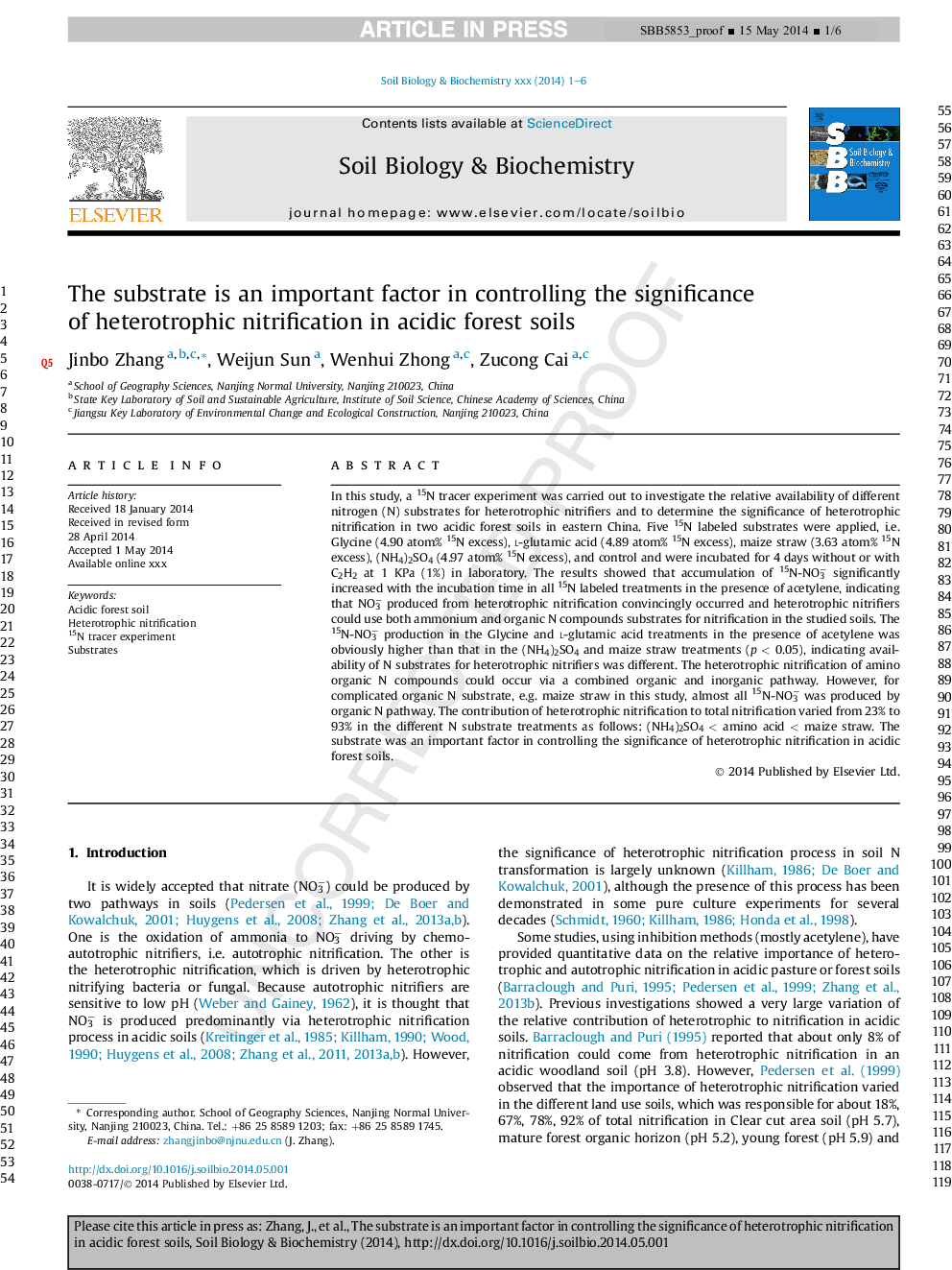| Article ID | Journal | Published Year | Pages | File Type |
|---|---|---|---|---|
| 8364604 | Soil Biology and Biochemistry | 2014 | 6 Pages |
Abstract
In this study, a 15N tracer experiment was carried out to investigate the relative availability of different nitrogen (N) substrates for heterotrophic nitrifiers and to determine the significance of heterotrophic nitrification in two acidic forest soils in eastern China. Five 15N labeled substrates were applied, i.e. Glycine (4.90 atom% 15N excess), l-glutamic acid (4.89 atom% 15N excess), maize straw (3.63 atom% 15N excess), (NH4)2SO4 (4.97 atom% 15N excess), and control and were incubated for 4 days without or with C2H2 at 1 KPa (1%) in laboratory. The results showed that accumulation of 15N-NO3â significantly increased with the incubation time in all 15N labeled treatments in the presence of acetylene, indicating that NO3â produced from heterotrophic nitrification convincingly occurred and heterotrophic nitrifiers could use both ammonium and organic N compounds substrates for nitrification in the studied soils. The 15N-NO3â production in the Glycine and l-glutamic acid treatments in the presence of acetylene was obviously higher than that in the (NH4)2SO4 and maize straw treatments (p < 0.05), indicating availability of N substrates for heterotrophic nitrifiers was different. The heterotrophic nitrification of amino organic N compounds could occur via a combined organic and inorganic pathway. However, for complicated organic N substrate, e.g. maize straw in this study, almost all 15N-NO3â was produced by organic N pathway. The contribution of heterotrophic nitrification to total nitrification varied from 23% to 93% in the different N substrate treatments as follows: (NH4)2SO4 < amino acid < maize straw. The substrate was an important factor in controlling the significance of heterotrophic nitrification in acidic forest soils.
Related Topics
Life Sciences
Agricultural and Biological Sciences
Soil Science
Authors
Jinbo Zhang, Weijun Sun, Wenhui Zhong, Zucong Cai,
